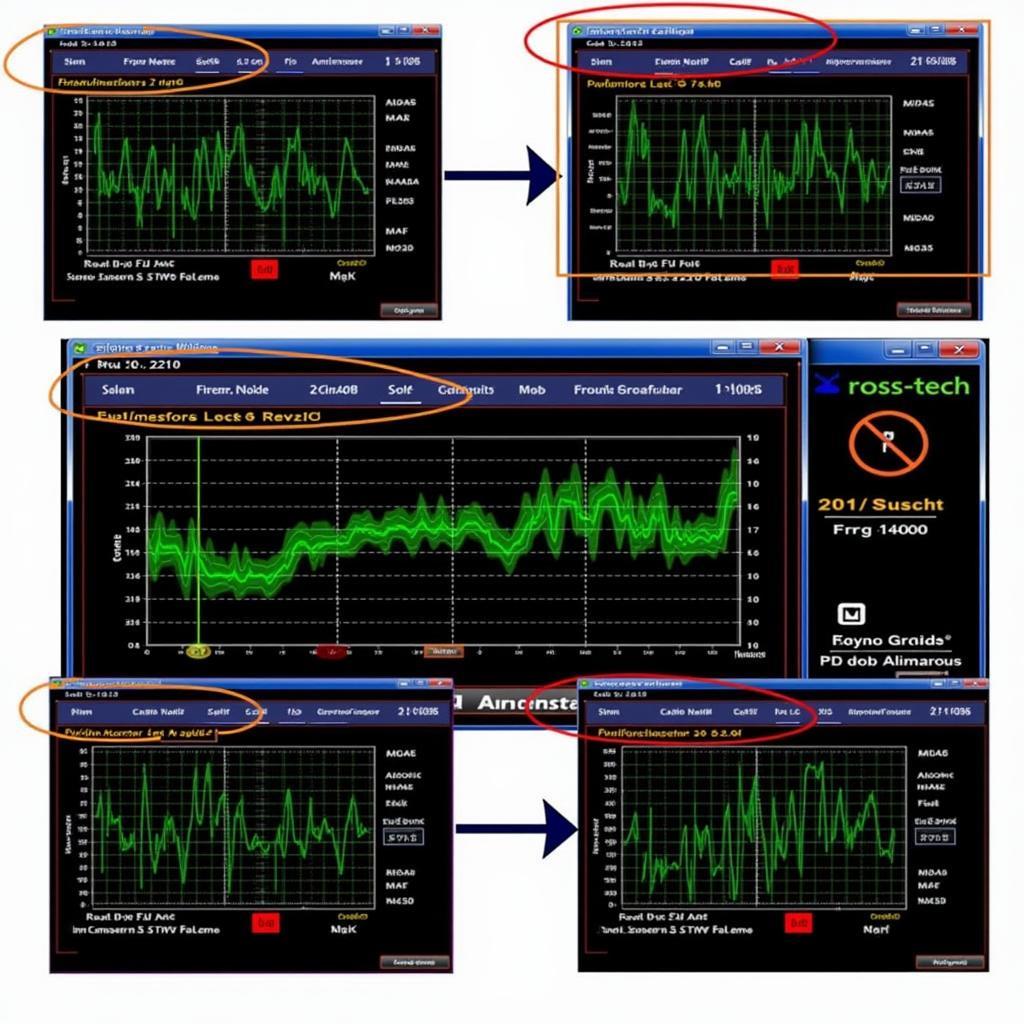Your cart is currently empty!

Decoding P2096 Ross-Tech: A Comprehensive Guide to Troubleshooting and Repair
The dreaded P2096 Ross-Tech code. Seeing it pop up on your diagnostic scanner can be unsettling. This comprehensive guide dives deep into understanding, diagnosing, and resolving the P2096 trouble code, providing you with the knowledge and steps to tackle this automotive issue head-on.
Understanding the P2096 Ross-Tech Code
The P2096 code indicates “Post Catalyst Fuel Trim System Too Lean Bank 1.” In simpler terms, it means the engine’s computer is detecting that the air-fuel mixture after the catalytic converter is too lean (too much air, not enough fuel) on Bank 1. Bank 1 refers to the side of the engine containing cylinder 1. This imbalance can affect performance, fuel economy, and even damage the catalytic converter over time. Using a Ross-Tech diagnostic tool like VCDS is essential for accurately identifying this code.
 Ross-Tech VCDS scan showing P2096 code
Ross-Tech VCDS scan showing P2096 code
Common Causes of P2096
Several issues can trigger the P2096 code. Some common culprits include:
- Exhaust Leaks: A leak in the exhaust system, particularly after the oxygen sensors, can introduce fresh air and skew the readings.
- Faulty Oxygen Sensors: A malfunctioning oxygen sensor can provide inaccurate data to the engine control module (ECM), leading to incorrect fuel adjustments.
- Vacuum Leaks: Leaks in the intake manifold or vacuum hoses can disrupt the air-fuel mixture, triggering the lean condition.
- Fuel Pressure Problems: Low fuel pressure, often caused by a weak fuel pump or clogged fuel filter, can starve the engine of fuel.
- Mass Airflow Sensor (MAF) Issues: A faulty MAF sensor can misread the amount of air entering the engine, causing the ECM to deliver an incorrect amount of fuel.
Diagnosing the P2096 Code with Ross-Tech
A Ross-Tech VCDS scan tool is invaluable for diagnosing the P2096 code. Here are some steps to follow:
- Scan for Codes: Connect your VCDS to the OBD-II port and scan for all diagnostic trouble codes. Note any other codes present, as they may be related.
- Check Live Data: Use the VCDS to monitor live data from the oxygen sensors, MAF sensor, and fuel pressure. This can provide valuable insights into the root cause of the problem.
- Perform Output Tests: VCDS allows you to activate various components like the fuel pump and injectors to test their functionality.
- Inspect for Leaks: Carefully inspect the exhaust system, intake manifold, and vacuum hoses for leaks. A smoke test can be particularly helpful for finding elusive vacuum leaks.
 Ross-Tech VCDS displaying live data
Ross-Tech VCDS displaying live data
Fixing the P2096 Issue
Once you have diagnosed the cause of the P2096, you can take the appropriate steps to fix it. This may involve:
- Repairing Exhaust Leaks: Welding or replacing damaged exhaust components.
- Replacing Faulty Sensors: Installing new oxygen sensors or MAF sensors.
- Fixing Vacuum Leaks: Replacing damaged vacuum hoses or repairing leaks in the intake manifold.
- Addressing Fuel Pressure Problems: Replacing the fuel pump, fuel filter, or fuel pressure regulator.
Expert Insights
“Using a quality scan tool like Ross-Tech’s VCDS is crucial for accurately diagnosing and resolving P2096. The ability to monitor live data and perform output tests can save you valuable time and money,” says John Miller, ASE Certified Master Technician.
“Don’t ignore the P2096 code. A lean condition can lead to increased emissions, reduced fuel economy, and even engine damage over time,” adds Sarah Thompson, Automotive Engineer.
Conclusion
Addressing the P2096 Ross-Tech code is crucial for maintaining your vehicle’s health and performance. By utilizing the powerful features of a Ross-Tech VCDS and following the diagnostic steps outlined in this guide, you can successfully troubleshoot and resolve this issue. For further assistance or specialized tools, contact us at VCDSTool at +1 (641) 206-8880 and our email address: vcdstool@gmail.com or visit our office at 6719 W 70th Ave, Arvada, CO 80003, USA.
FAQ
- What is the P2096 code? P2096 indicates a lean air-fuel mixture after the catalytic converter on Bank 1.
- Can I drive with a P2096 code? While you might be able to drive, it’s best to address the issue promptly to prevent further problems.
- How much does it cost to fix P2096? The cost depends on the underlying cause and can range from a simple sensor replacement to more extensive repairs.
- What tools do I need to diagnose P2096? A Ross-Tech VCDS scan tool is highly recommended.
- Can an exhaust leak cause P2096? Yes, exhaust leaks, especially after the oxygen sensors, are a common cause.
- How can I prevent P2096 in the future? Regular maintenance, including checking for leaks and replacing worn components, can help prevent P2096.
- What does Bank 1 mean? Bank 1 refers to the side of the engine that contains cylinder 1.
by
Tags:
Leave a Reply